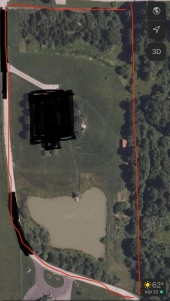
 1
1




 1
1
 1
1




John Daley Bendigo, Australia The Enemy of progress is the hope of a perfect plan
Benefits of rainfall collection https://permies.com/t/88043/benefits-rainfall-collection
GOOD DEBT/ BAD DEBT https://permies.com/t/179218/mortgages-good-debt-bad-debt




John C Daley wrote:- A mobile set of panels to build a race and pens
- sheep crush
- foot bath
- shearing shed and dry pens
- ring tool to remove testicles and tails
- trailer with suitable and safe cage for transporting sheep. Sheep must be transported in a correct manner to prevent injury, death or harm.
 1
1




John Daley Bendigo, Australia The Enemy of progress is the hope of a perfect plan
Benefits of rainfall collection https://permies.com/t/88043/benefits-rainfall-collection
GOOD DEBT/ BAD DEBT https://permies.com/t/179218/mortgages-good-debt-bad-debt








Bonnie Johnson wrote:Oh I wish I had been able to plan my goat stuff out before getting them. INstead everything has just kind of grown and evolved over the years. Started with just a few goats.....now we keep about 40 over the winter including bucks. We had 56 kids last year. We only have about 18 to 20 acres in pasture. We also have horses and steers on the pasture.
I used to use the electric netting and moved it around for my rotational grazing. What a pain in the butt. I didn't want to cut down the trees and wild rose bushes as the goats love that stuff. Electric netting and roses bushes and black berry vines do not mix well. So I planned it out on paper to put in my permanent rotational grazing pastures. I am so glad I did. I used some 4 inch by 4 inch goat fence that is 52 inches tall for some of the perimeter fence. I used some cattle panels in areas of old fence line that had a lot of trees. I didn't want to cut down the trees so I only took the saplings down and wove the cattle panels between the big trees. I used a lot of high tensile! I love the high tensile, when trees come down on it it is so easy to fix. I ended up with seven rotational grazing pastures that are permanent. I use cattle panels for gates. It works really well. I wish I had discovered the New Zealand/Aussie bracing system before I was most of the way done with my high tensile fencing as it saves a lot on fence posts. I ran six lines of high tensile wire and alternated them so they are positive and negative and I put a ground on each pasture connected to the negative so the goats would get a good shock. I also bought a kick ass fence charger. Get the biggest one that puts out the most joules that you can afford.
So I am going to suggest that you make permanent pastures and divide them with high tensile fencing. It will save you so much work. As moving that electric netting is a lot of work! You have to move waterers and feeders and mineral feeders to. I have my mineral feeders on my skiddable shelters in the each pasture.
Another thing to consider is water. We actually ran water lines and put in hydrants so we can reach each pasture. We rented a trencher and did that ourselves. It really didn't cost that much. My husband even ran water line under the creek and we put a hydrant about 300 feet from our house that allows us to use hoses in the summer to reach four of our pastures.
I made my shelters with pallets for two walls and they sit on pressure treated 4x4 posts. I bought some used sheet metal at an auction and used that for the roof. Mineral feeders are made from pvc pipe.
Plan out your area where you will lamb. Will you need lambing jugs? Plan those out if you need them. I used mostly pallets to make my kidding pens inside a metal hoop house we built and put sheet metal on it after the billboard tarp wore out the second time.
A sweep and a head gate handling system can be built pretty cheaply but easily from pallets. You can buy a head gate and just put it on the end of the raceway/ sweep. We made a simply tub and sweep using some wire filled gates we bought at an auction and some kennel panels we bought at Rural King for $85 each. It works pretty good. I use winter feeding area as an alley way. You may be able to plan things out so you can utilize some features for more than one use.
Anyhow, good luck and I hope that all the ideas everyone is coming up with help you get things planned out!

| I agree. Here's the link: http://stoves2.com |





